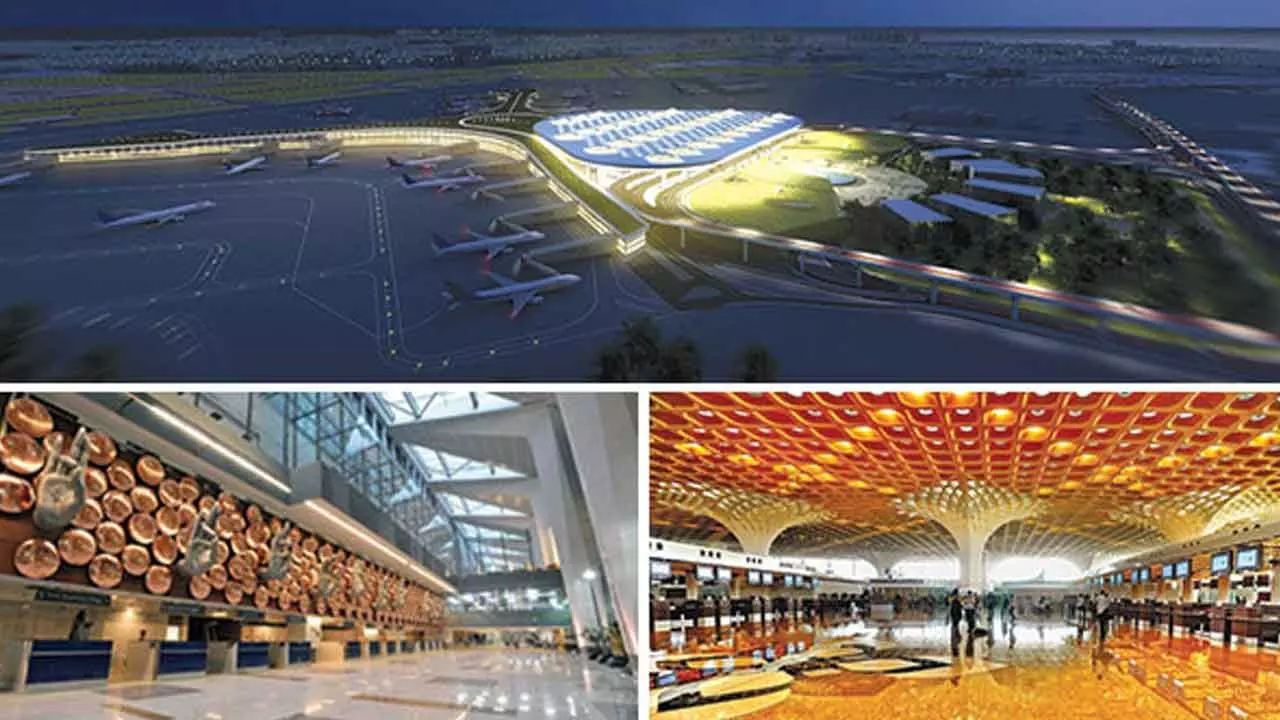How India’s Airport Infra Push Can Fuel Economic Growth
How India’s Airport Infra Push Can Fuel Economic Growth

India's aviation industry has experienced significant growth in the past 10 years. The number of operational airports in the country has doubled from 74 in 2014 to 157 in 2024 and the aim is to increase this number to 350-400 by 2047. The domestic air passengers have more than doubled in the past decade, with Indian airlines significantly expanding their fleets.
The springboard for this growth has been the government’s policies and initiatives. One such initiative is the Regional Connectivity Scheme – Ude Desh ka Aam Nagrik (RCS-UDAN) launched in 2016, which aims to provide connectivity to unserved and underserved airports of the country through the revival of the existing airstrips and airports.
The Indian government is also placing a strong emphasis on sustainability. This is evident in the achievements of Delhi and Mumbai airports, both of which have been awarded the prestigious Level 4+ Carbon Accreditation. This recognition highlights their commitment to reducing their carbon footprint and promoting responsible aviation practices.
With travel and tourism playing a vital role in the country’s economic growth, the enhancement of airstrips stands as a testament to the government’s proactive stance in propelling the aviation industry forward.
The commitment to developing airport infrastructure not only reflects a vision for a more robust aviation ecosystem but also underscores the government’s recognition of the pivotal role that aviation plays in stimulating economic growth, fostering regional development, and enhancing connectivity. By bolstering the aviation landscape, the government aims to facilitate greater ease of travel, promote tourism, and attract investments, thereby catalyzing overall socio-economic progress.
Moreover, the endeavour to revamp 453 potential airstrips underscores a multi-dimensional approach toward infrastructure development, encompassing aspects such as upgrading facilities, enhancing operational efficiency, and embracing technological advancements. This holistic strategy is poised to not only elevate the standard of aviation infrastructure but also contribute to elevating India’s standing as a regional aviation hub.
In light of the ever-evolving dynamics of the aviation industry and the increasing emphasis on sustainability and innovation, the government’s unwavering commitment to airport infrastructure development sets a promising trajectory for the future of aviation in India. By laying the groundwork for a more resilient and efficient aviation network, India is poised to not only meet the burgeoning demands of air travel but also carve a distinctive niche in the global aviation landscape.
Furthermore, the Airports Authority of India has earmarked around $4 billion for the expansion of airport infrastructure in non-metro cities. This investment is a clear indicator of the government’s commitment to modernizing and enhancing the country’s aviation capabilities. Additionally, plans to privatize 25 more airports in the upcoming financial year are set to further stimulate growth and efficiency within the sector.
In an impressive presentation, Kapil Kaul, Chief Executive Officer and Director at CAPA India, mentioned that looking ahead to the fiscal year 2024-25, CAPA India forecasts a notable increase in both domestic and international air traffic. Domestic air traffic is expected to grow by 6-8 percent, reaching 161-164 million passengers, while international traffic is projected to rise by 9-11 percent to 75-78 million passengers. These projections highlight the continued expansion and vitality of the Indian aviation market, signalling promising opportunities for stakeholders in the industry.
The aviation sector in India is experiencing a phase of rapid evolution and growth, driven by strategic investments, infrastructure enhancements, and a commitment to sustainability. With promising projections for the future, the industry is poised to witness significant developments and opportunities in the years to come.

